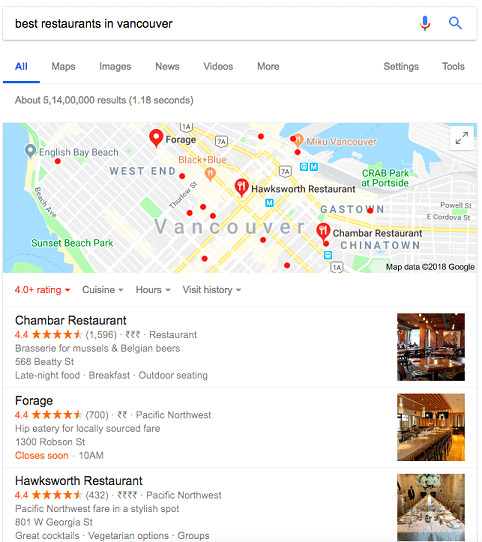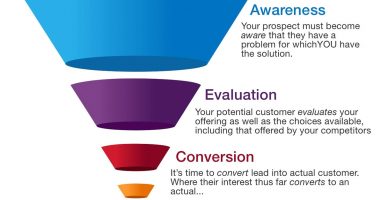
Table of Contents
- Introduction
- Create and optimise your GMB account
- Make your way to relevant online directories
- Think local. Think mobile
- Create local content
- Closing thoughts
Introduction
Despite all our search engine optimisation efforts, we fail to give enough importance to the “local” aspect of our businesses. If you look at the search results, there is a dedicated section that highlights local businesses for “local queries”. In fact, Google is constantly pushing localised results/content to the top.
Like when a user enters something like “best restaurants in Vancouver”, the first result is a 3 pack listing of local restaurants in the area. And the businesses occupying this space receive most of the offline conversions because of their enhanced online presence.

Do you know what those businesses are doing to keep themselves locally relevant? They are focusing on improving their local SEO. That’s what you should do too, so you can dominate the local search results. Here are X tips for you to include in your local strategy:
1. Create and optimise your GMB account
Before you set out on your local SEO journey, the first step should be to create your Google My Business Account. It’s a simple and free tool that helps you manage your Google listings i.e. how you appear in Google results.

Setting up the account is easy. Follow this link and fill in your business details. Make sure to give the possible information especially your contact details, opening and closing hours, accurate location. Try not to leave any field blank. It is also essential that you avoid any error while filling out the details. Once your GMB account is verified, your business listing starts appearing in Google results.
2. Make your way to relevant online directories
For almost every niche, there is an online directory. But most businesses are unaware of them or their importance. The whole reason why online directories and listings exist is so “your business can be found” by those looking for the services/products you offer.
Take for instance these platforms: Yelp, Bing, Yellow Pages. They expose your business to a huge audience and help you earn more site traffic and potential customers. Here is a list of 26 free online directories that can help you get the much-needed online visibility.
3. Think local. Think mobile
A lot of local searches happen on mobile devices. Back in 2016, a study revealed that almost 60% of local queries were made by mobile users. This clearly implies the importance of being mobile-ready when trying to win the local crowd.
Users rely on their mobile devices when they are on the move. And that’s when a large chunk of local queries come in. So it is crucial that you focus on speeding your site, decluttering your landing pages and making the overall mobile experience engaging for the potential user so he converts. And especially with the mobile-first index rolling in, mobile optimisation has become the need of the hour.
4. Create local content
“Content is king” phrase has never been truer than it is now. The rise of content has created a dynamic shift in the way brands reach out to their audience. The approach is less intrusive and more genuine. Through content, brands are helping their users and redefining thought leadership.
To take this a step ahead and make yourself useful to your local audience, create local content. Because when your content is localised, it helps you establish your local authority which ultimately benefits your business, both online and offline.
Closing thoughts
Local search is perhaps the most useful space for small and medium-sized businesses as it helps them gain a larger audience and become more accessible to them. To channelise your local powers, do not forget to look beyond offline tactics. Put the above points in your online checklist and start your journey to dominating the local search.



